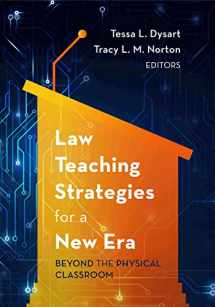
Law Teaching Strategies for a New Era: Beyond the Physical Classroom
Book details
Summary
Description
"The abrupt move to online legal education in Spring 2020 accelerated the move to online legal education that has been slowing gathering steam in recent years. As more institutions consider the potential to expand their reach with online courses and programs, law professors must move past "pandemic teaching" and seriously consider how they can create and deliver quality legal education online. Law Teaching Strategies for a New Era: Beyond the Physical Classroom, the first comprehensive book on online legal education, explores techniques, tools, and strategies that can assist all types of law professors in that endeavor. The 34 chapters, authored by law professors from across the country, provide a comprehensive look at expanding legal education beyond the traditional classroom experience. Divided into four sections, the book starts by offering tips for getting started and fostering inclusion in online courses. It then moves to suggestions for course design of blended, synchronous, and asynchronous courses, including a chapter on measuring success through empirical research. Finally, it concludes with two sections on course-specific topics covering the range of legal education-from large first-year courses to seminars to skills-based courses and bar preparation. Both new online educators and seasoned veterans of online education will find tips and strategies to improve their online teaching"--


We would LOVE it if you could help us and other readers by reviewing the book
Book review



